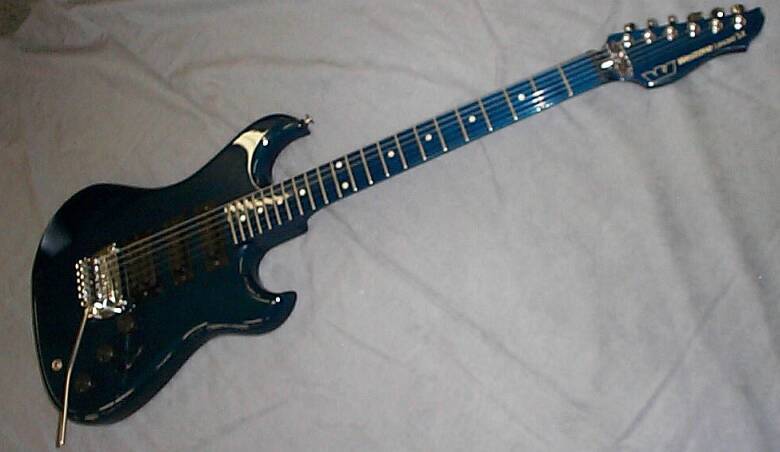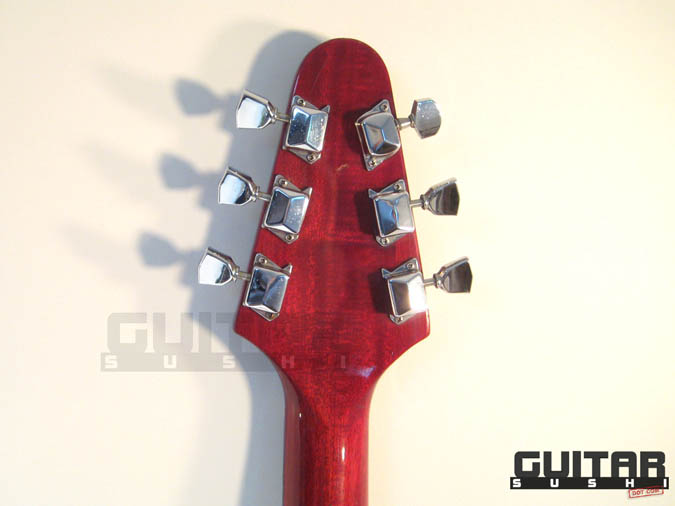

Dyna Gakkiĭyna Gakki began production in 1972 in the city of Nagano, Japan. Daion went out of business shortly after 1984. JooDee was made by master guitar luthier Shiro Tsuji. Maker of house brand Daion guitars, along with JooDee and Johnson badged guitars.

Daion Musical Instrument Companyĭaion was founded in 1962 by Yasuyuki Teradaira. Daimaru appears to have gone out of business after 1980. Daimaruįounded in the city of Matsumoto, Japan in the early 1960s, Daimaru produced their own house brand, although they outsourced electric guitar production to Teisco during the 1970s period. Guitars made by Chushin from this period are well-made and appreciated by guitar enthusiasts worldwide.

The company may have possibly made some guitars with the Aztec, Maya and Robin badges, but that is not verified. During the 1960-1980 period they were responsible for badges Bambu, Cobran, El Maya and Hisonus as well as some Charvel, Fresher and Jackson badges. I believe that Chushin may have been a member of the Matsumoto Musical Instruments Association listed further down because both companies produced Fresher guitars during different periods.with Matsumoto beginning production and Chushin ending it (perhaps because the Association was disbanded?). Sounds hopeless, right? Not always!Ĭhushin is still in operation today in Nagano, Japan and does business with guitar giant Fender. And sometimes, the guitar which is supposed to be an MIJ guitar is actually made elsewhere (Korea, Indonesia) because production was moved during this period in history. Parts from other guitars would be used in the making of a particular badge for a period of time because it was all the manufacturer had to hand.which doesn't always help in identifying a maker. In some cases a manufacturer would farm out production to various manufacturers, making it still more difficult to know who made the guitar in your hands. Some manufacturers merged or changed hands over the years which added to the confusion, sometime merging with another maker, only to pick up their name later. Japanese manufacturers made multiple badges at the same plant, many of whom resemble each other closely. People often make the mistake of citing the American or European importer as the 'maker' of the guitar, when in fact several Japanese manufacturers were producing badged guitars out of their plants and shipping them to America and Europe to sell. As I've read many different guitar collector/enthusiast forums and spoken to local guitar dealers, it's clear that the layperson has little to no idea who made their badged guitar from the 1960-1980 period, also known as the MIJ golden age of guitar manufacturing. 300.- to 600.- US$.This is one of the most frustrating questions from the MIJ collector. I assume - if it is in a very good condition - that you may get approx. You may get a little more than half of the price of the "sister bass" of your "Electa". I am sure that an "Ibanez" branded guitar or bass will get a higher price but maybe there are some collectors who are interested in these "Electa" instruments. (you may want to take a look in the Ibanez catalogs from 1975 or 1976 ). It may be a little difficult to judge the prices, but for every "Electa" bass or guitar there may be a nearly identical "Ibanez" model made in the same year. These guitars and basses were made during the same time period, with sometimes nearly the same look (both made Les Paul copies for example), but the "Electra" branded guitars were made by the Matsumoku factory (best known for "Aria" guitars) in Japan. So your´s was made in october 1975.Ī little confusing may be that there is a nearly identical spelled brand: "Electra". The serial of your bass follows the same pattern like the one used for Ibanez guitars: The letter stands for the month (A=january B=february J=october), the following two digits mark the year (in your case 1975). As far as I know the "Electa" branded guitars and basses were made for the australian market. "Electa" was one of the brands used for guitars made by the Fujigen Factory (mainly known for building the Ibanez guitars in these years) in Japan during the 70s.


 0 kommentar(er)
0 kommentar(er)
